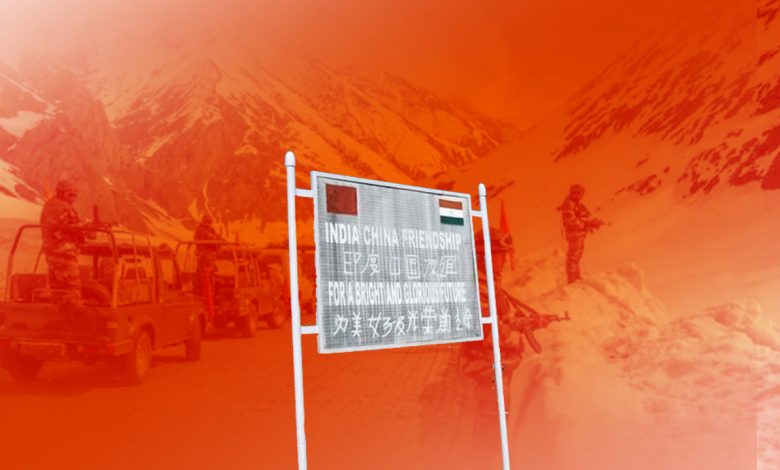Daily Current Affairs for UPSC
Indian and Chinese Troops Clashed in Arunachal Pradesh

Topic- India and its Neighbourhood [GS Paper-2]
Context- Recently, the military troops of India and China clashed along the Yangste river in Tawang sector in Arunachal Pradesh.
Key Highlights
- This clash was the first such incident involving the Indian soldiers and Chinese PLA troops since the Galwan Valley incident in 2020.
- Both sides patrol areas up to their claim lines and this has been a trend since the year 2006.
- According to the India Army, there are certain areas along the Line of Actual Control (LAC) in the Tawang Sector that are areas considered as of differing perception.
- The LAC is divided into certain different categories i.e. western (Ladakh), middle (Himachal Pradesh and Uttarakhand), Sikkim, and eastern (Arunachal Pradesh) sectors.
- The incident came days after China expressed its objection to Operation Yudhabhyas, an India-US joint military exercise at Auli in the Uttarakhand hills, claiming it was a violation of 1993 and 1996 border agreements.
Significance of Arunachal Pradesh from an Indian as well as Chinese Perspective
- Strategic Importance
- Arunachal Pradesh, also known as the Northeast Frontier Agency (NEFA) until 1972, is the largest state in the northeast and shares international borders with Tibet to the north and northwest, Bhutan towards the west and Myanmar to the east.
- The state acts like a protective shield to the northeast.
- However, China has been claiming Arunachal Pradesh as a part of southern Tibet.
- And while China may lay claim to the entire state, its major interest lies in the district of Tawang, which is in the north-western region of Arunachal and borders Bhutan and Tibet.
- Bhutan Factor:
- Taking control of Arunachal would mean that Bhutan would have Chinese neighbours on its western and eastern borders if Beijing gained control.
- On the western side of Bhutan, China has already begun building motorable roads that link to strategic points.
- Waterpower:
- China has control over India’s water supply to the northeastern region.
- China has constructed several dams and can use water as a geo-strategic weapon against India by causing flooding or drought in the region.
- The Tsangpo river, which originates in Tibet, flows into India and is called Siang in Arunachal Pradesh before it falls into the Brahmaputra.
- In 2000, a dam breach in Tibet caused floods which wreaked havoc in northeast India claiming 30 lives and leaving more than 100 missing.
China’s interest in the Tawang Sector
Strategic Significance:
- China’s interest in Tawang could be for tactical reasons as it provides a strategic entry into India’s northeastern region.
- Tawang is a significant point in the corridor between Tibet and Brahmaputra Valley.
Tawang Monastery
- Tawang, which borders Bhutan, hosts the Galden Namgey Lhatse, the world’s second-largest monastery of Tibetan Buddhism, the largest being the Potala Palace in Lhasa.
- The monastery was founded by Merag Lodroe Gyamtso in 1680-81 to honour the wishes of the fifth Dalai Lama.
- China consistently claims that the monastery is evidence that the district once belonged to Tibet. They cite historical ties between the Tawang monastery and the Lhasa monastery in Tibet to support their claim over Arunachal.
Cultural Connections
- Tawang is a vital center of Tibetan Buddhism and there are some tribes in the upper Arunachal region which have cultural connections to the people of Tibet.
- The Monpa tribal population practices Tibetan Buddhism and are found in some areas of Tibet.
- According to some experts, China is scared that the presence of these ethnic groups in Arunachal could at some stage give rise to a pro-democracy Tibetan movement against Beijing.
Political Significance
- When the Dalai Lama escaped Tibet in 1959 after China crackdown, he entered India through Tawang and stayed in the Tawang monastery for some time.
Way Ahead
- India should be vigilant enough for any new development in China near its border to protect its interests efficiently.
- Further, it needs to build robust Infrastructure in difficult border areas in its territory to ensure movement of personnel and other logistical supplies in an efficient way.
- Border troops need to continue their dialogue, quickly disengage, maintain proper distance and ease tensions.
- The two sides should abide by all the existing agreements and protocols on China-India boundary affairs and avoid any action which could escalate matters.





.png)



